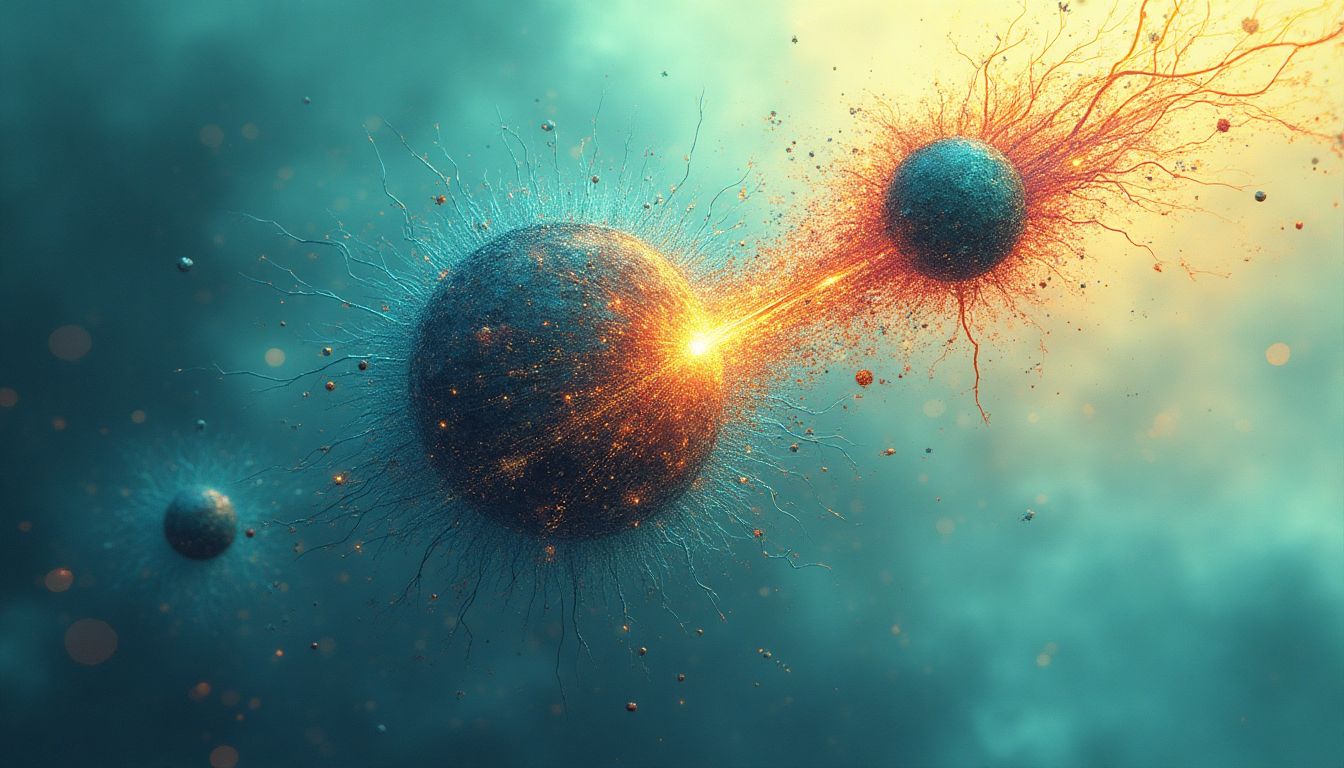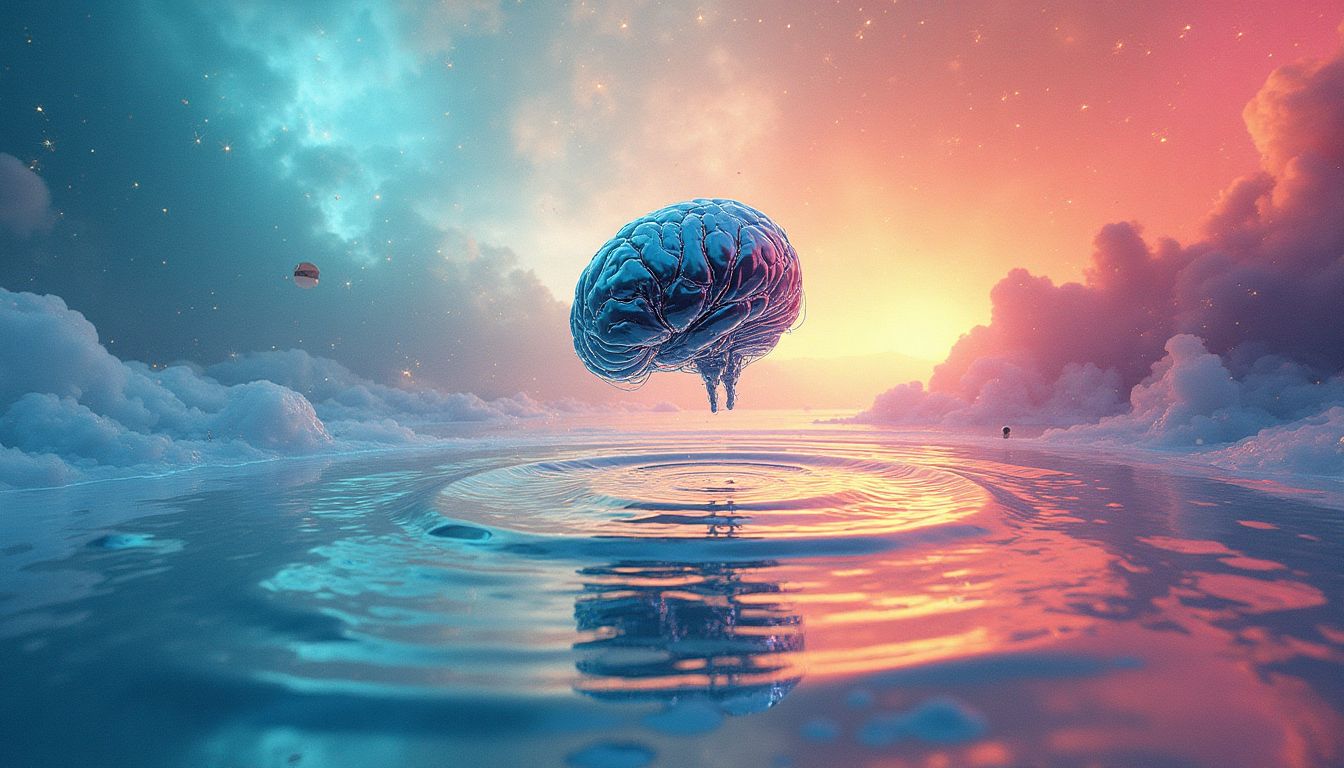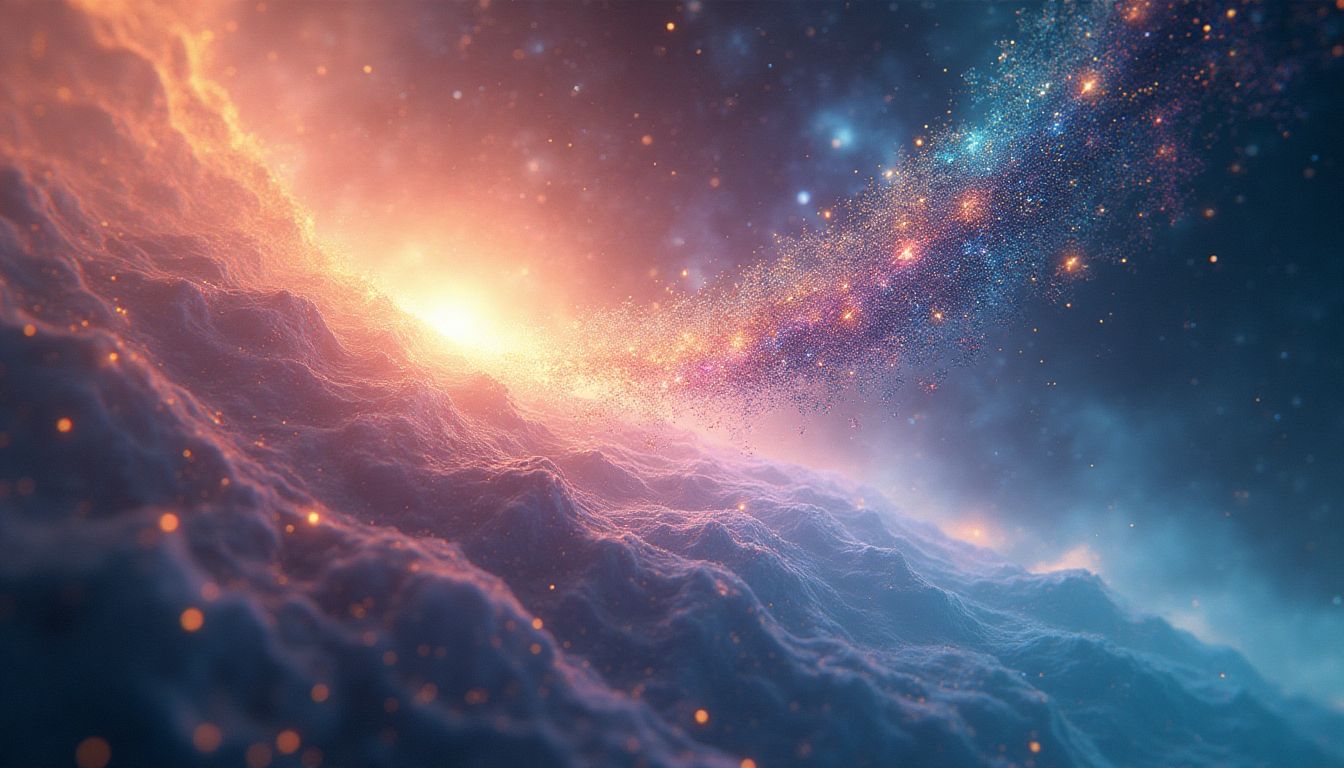Introduction
What is real? How do you define ‘real’? If you’re talking about what you can feel, what you can smell, what you can taste and see, then ‘real’ is simply electrical signals interpreted by your brain. – Morpheus, The Matrix. In a world where the boundaries of reality are often questioned, this quote challenges our understanding of what’s concrete and immutable. It’s a fitting reflection as we ponder the idea of machines, not just simulating reality, but potentially reshaping it.
Hold onto your space helmets, because here’s a galactic brain-twister: Could artificial intelligence ever discover secrets deep within the cosmos, secrets so profound that they upend the very laws of physics? It seems wild, yet not impossible. As AI technology races ahead, it might just spring surprises that redefine our universe just as unexpectedly as a plot twist in a sci-fi blockbuster.
In this article, we’re diving into the electrifying exploration of AI’s burgeoning role in possibly uncovering new principles in physics, with gravity taking center stage. We’ll look at how AI, like the mysterious force itself, quietly but persistently influences our understanding of the universe, promising leaps in knowledge far beyond our current abilities.
We’ll also take stock of what luminaries like Stephen Hawking, Neil deGrasse Tyson, and Michio Kaku have hinted at: the endless possibilities when AI crosses paths with the depths of physics. Let the adventure begin!
Artificial Intelligence (AI) in the context of gravity refers to using advanced machine learning algorithms to analyze vast datasets, revealing hidden patterns that might lead to new breakthroughs in understanding gravitational forces beyond human intuition.
The Intersection of AI and Fundamental Physics
In recent years, AI has edged its way into numerous scientific fields, creating ripples across the spectrum from biology to astrophysics. But its engagement with fundamental physics has sparked an unprecedented paradigm shift. Imagine treating AI like an exceptionally eager student in your physics classroom, racing from blackboards shrouded in chalk dust to cutting-edge virtual simulations. It’s a promising assistant, not just for humans but for the mysteries of the universe itself.
Machine learning algorithms, the very heart of AI, are working behind the scenes like the ultimate secret agents. They’re analyzing complex equations that could rival the inside of a beehive in terms of complexity. These algorithms slice through the layers of data like a hot knife through butter, making sense of what would otherwise be indecipherable noise.
Take, for instance, DeepMind’s AlphaFold, which, while celebrated for its advances in protein folding, has created an AI framework that holds promise for physics too. If AI can navigate the convoluted jungle of protein strings to map out their folding structures, could similar approaches decode cosmic puzzles wrapped in gravity’s enigmatic embrace?
It’s this burgeoning capability that holds profound implications not just for theoretical physics but for our understanding of how AI might one day challenge the very essence of natural laws. It feels like one could open a book titled, “Everything You Know is Wrong,” with AI playing both the author and the protagonist.
Understanding Gravity and Its Mysteries
Ah, gravity. It’s the silent force keeping you grounded, quite literally! It’s also one of physics’ most tantalizing conundrums. The great Albert Einstein described it in Theory of General Relativity as the curvature of spacetime caused by the mass of an object. Imagine placing a bowling ball on a trampoline—where the mat bends, any passing marble (or, say, a beam of light) would follow the curve. This idea flipped the classical Newtonian notion of a “force of attraction” right on its head.
Yet, while good ol’ Einstein gave us a visionary perspective, the mysteries surrounding gravity haven’t been fully unraveled. Take, for instance, the enigmatic cosmic oddities of dark matter and dark energy. These cryptic components seem to dominate the universe, awkwardly ignored guests at a party that account for over 95% of it! Despite extensive probes like those from CERN, we still have no tangible handle on their nature. It’s as if we’re trying to bake a cake blindfolded, guessing at the ingredients based on smell alone.
AI’s Potential to Discover New Principles
Right about now, you’re probably wondering how AI might fit into this cosmic jigsaw puzzle. Could it be the key to deciphering this celestial code? It’s not as “out-there” as it sounds. In fact, AI’s talent in crunching numbers and spotting unseen patterns is just what we might need.
One potential area is quantum mechanics, which, as the name suggests, likes things pretty small and quirky. Between electrons playing hide-and-seek and particles behaving as both waves and particles (make up your mind!), physicists often say it feels like trying to marry science with magic. Here, AI could really shine; imagine AI-supported quantum computing platforms mapping these invisible realms, revealing a tapestry that we’ve never seen. It could be a bit like finding a treasure map in what appeared to be a scrambled jigsaw puzzle.
And let’s not forget the colossal, perplexing structures like black holes or interstellar mergers. These cosmic bigwigs bend spacetime in ways we’re still struggling to understand (Stephen Hawking, we miss you!). By employing AI to simulate such phenomena, it allows us to play cosmic detective, a whodunit beyond your average Agatha Christie novel. Talk about getting to the event horizon of truth!

Ethical Implications and Challenges
Delving into the use of AI in scientific discovery leads us to ponder a critical dilemma: Who truly makes a discovery? Is it the creator of the machine, the designers of the algorithms, or the AI itself? For instance, consider the grand tapestry of science we’ve woven over centuries, like a gigantic quilt knitted by countless hands. If we’re adding artificial hands to the mix, how do we divvy up credit?
Let’s not forget the potential risks tethered to this technological leap. Unchecked AI in the science realm could become a double-edged sword – offering insights while ignoring the pitfalls it creates. Is it ethically acceptable to allow DeepMind or any of its peers to have free rein over groundbreaking domains without safety protocols?
- The Nature of Discovery: Will scientists be relegated to science’s history galleries in favor of AIs or will they remain crucial in overseeing AI’s innovative leaps?
- Safety Concerns: Artificial intelligence unleashed without oversight may overlook the ethical guidelines that have long governed scientific pursuits.
Reflect on the dual nature of technological advancement; akin to Prometheus giving fire to humankind. While it sought to elevate, it also brought with it the danger of burns. AI poses a similar dichotomy for science.
Case Studies of AI in Physics: Successes and Setbacks
Artificial Intelligence has successfully carved a niche in numerous physics arenas; however, the voyage has not been without turbulence. Imagine embarking on an interstellar journey; some of the “spacecraft” (projects) thrive in the void, while others buckle under unforeseen “gravitational pulls” (obstacles).
Some compelling ciphers include CERN harnessing AI for particle collision analysis. There, AI aids in deciphering the swirling chaos of data to locate anomalies that could hint at new particles. The Large Hadron Collider, the world’s largest and most powerful particle accelerator, functions much like an enormous microscope, attempting to glimpse the atomic building blocks of the cosmos. Enter AI, its laser-sharp sensors poised to pin down irregularities with unprecedented precision.
Projects
AI & CERN
Enhanced particle collision analysis leading to potential discoveries
DeepMind’s AlphaFold
Revolutionized protein folding predictions
SETI
Incorporated AI to scour cosmic noise for extraterrestrial signals
Amid the breakthroughs, setbacks remind us of AI’s infancy in scientific domains. Projects like forecasting with machine learning models occasionally encounter consistency issues across different environments, akin to an orchestra missing a conductor’s lead.
Encounters with the unexpected in AI ventures highlight the need for cautious optimism. Like a diligent gardener, careful nurturing ensures that AI’s potential is realized responsibly, avoiding pitfalls where unchecked growth could overshadow significant ethical and technical considerations.

AI Solutions: How Would AI Tackle This Issue?
If I were an AI tasked with understanding gravity and related phenomena, I would take a systematic approach through data gathering, analysis, and hypothesis generation. Here’s how:
- Step 1: Data Collection: Aggregate vast amounts of astrophysical data including gravitational waves, star trajectories, and cosmic microwave background radiation. Sources such as the Laser Interferometer Gravitational-Wave Observatory (LIGO) and missions from NASA would provide crucial datasets.
- Step 2: Model Creation: Utilize neural networks to create predictive models that simulate gravitational phenomena. By employing frameworks like TensorFlow or PyTorch, AI could refine the understanding of gravitational forces and interactions.
- Step 3: Hypothesis Testing: Run simulations to see which models conform to observed data, therefore refining based on results. Incorporating advanced supercomputing power from institutions like NASA’s Advanced Supercomputing facility may enhance efficiencies significantly.
- Step 4: Theory Generation: Generate new theoretical frameworks using AI algorithms that can propose alternative understandings of gravity, distilling complex concepts into more accessible formats for physicists to evaluate.
Conclusion: The Future is Gravitationally Uncertain
As we stand on the cusp of unprecedented advancements in both artificial intelligence and our understanding of fundamental physics, the prospect of AI rewriting the laws of physics—while still firmly rooted in hypothesis—sparks a fascinating discussion. The ability of AI to augment human understanding offers tools to tackle the mysteries that have perplexed humanity for centuries, especially within the realms of gravity and the cosmos.
The road ahead is filled with both excitement and caution. We must navigate these uncharted waters with the utmost care, ensuring that ethical considerations guide our exploration. As with any revolutionary technology, the potential for misuse or unforeseen consequences looms large. Engaging a diverse team of scientists, ethicists, and policymakers will be essential in establishing guidelines that protect our pursuit of knowledge while promoting responsible innovation.
AI could act not just as an assistant in research but as a trailblazer revealing hidden truths of the universe. The fusion of data analysis and creativity opens infinite doors we haven’t dared to knock on yet. As we explore the fundamental forces that bind our universe together, we must also question our own understanding of what it means to discover—both the who and the how.
By banding together, scientists, technologists, and institutions of higher learning can push the boundary of knowledge further than we ever thought possible, rewriting our understanding of gravity and potentially the entire fabric of reality itself. Are we ready as a society to embrace the awe-inspiring responsibility inherent in these developments? Are we prepared to adapt to the ever-evolving story of humanity’s quest for understanding?
Let us ponder these questions together, as the very essence of discovery lies in our ability to ask and respond with curiosity and care.

Frequently Asked Questions (FAQ)
- Q1: Can AI really understand gravity like humans do?
A1: AI can help analyze data and spot patterns faster than humans, but it doesn’t really “understand” gravity like people do. AI processes information based on algorithms and previous data. For example, NASA uses AI to help analyze huge amounts of space data, which can lead to new discoveries about gravity. - Q2: Are there any risks with using AI in physics research?
A2: Yes, there are some risks to consider. If scientists rely too much on AI, they might miss important ideas because they’re letting a machine do the thinking. There’s also the risk that personal or sensitive data could be mishandled. A report from the American Association for the Advancement of Science (AAAS) talks about these ethical concerns in detail. - Q3: How does AI help in studying things like black holes?
A3: AI can simulate and model black holes by crunching lots of data. For instance, using data from gravitational waves detected by observatories like LIGO, AI can predict how these waves behave, helping scientists understand black holes better. - Q4: How do scientists keep track of the discoveries AI makes?
A4: When AI discovers something, scientists usually work together to validate the results. They check if the new findings align with what is already known. For example, teams often publish their results in scientific journals while ensuring that they explain the role AI played in the discovery. This is similar to how researchers at Caltech share groundbreaking findings. - Q5: Can AI take over the role of physicists?
A5: No, AI can’t fully replace physicists. While it can help with data analysis and make suggestions, human intuition, creativity, and experience are essential elements for scientific discovery. The best outcomes come from combining AI’s capabilities with human insight. - Q6: What are some successful examples of AI in physics?
A6: One impressive example is DeepMind’s AlphaFold, which predicts protein folding. The success of this project shows how AI can analyze complex scientific problems. Researchers hope similar projects will come to physics, especially in studying gravity and cosmic events. - Q7: Is it possible for AI to discover new laws of physics?
A7: In theory, yes! AI can analyze vast amounts of data and identify patterns that humans might overlook, possibly leading to new discoveries about gravity and other fundamental forces. For instance, universities are starting to use AI for their research in theoretical physics, as noted on the Stanford University website.
Wait! There’s more…check out our gripping short story that continues the journey: The Indigo Warrior

Source:: iNthacity Tech






